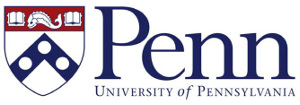The Mid-Atlantic Megalopolis: Difference between revisions
No edit summary |
No edit summary |
||
| Line 15: | Line 15: | ||
|[[The Mid-Atlantic Megalopolis#Project Websites & Social Media|Project Websites]] | |[[The Mid-Atlantic Megalopolis#Project Websites & Social Media|Project Websites]] | ||
|- | |- | ||
|[ Network Map] | |[https://www.idigbio.org/content/digitization-tcn-mid-atlantic-megalopolis-map Network Map] | ||
|- | |- | ||
|[[The Cretaceous World#Publications|Publications]] | |[[The Cretaceous World#Publications|Publications]] | ||
Revision as of 15:45, 22 September 2016
Digitization TCN: The Mid-Atlantic Megalopolis: Achieving a greater scientific understanding of our urban world
| The Mid-Atlantic Megalopolis TCN (MAM) | |
|---|---|
| Quick Links | |
| Project Summary | |
| Current Research | |
| Project Websites | |
| Network Map | |
| Publications | |
Project Summary
In light of the increasingly urban future of our planet, a thorough understanding of the biological processes at work in urban areas is necessary for the continued survival of Earth's inhabitants, including humans. The first step in that understanding is to know what thrives, survives, or perishes in cities, now and in the past. The Mid-Atlantic Megalopolis (MAM) Project begins this study by looking at vascular plants, with the digitization of roughly 700,000 herbarium specimens from eleven institutions, including public and private universities, state agencies, arboreta, museums, and botanic gardens, in the urban corridor from New York City to Washington, D.C. As the largest, oldest, and most populated urban corridor in the U.S., this area and its flora present a unique opportunity for the study of urbanization, particularly given its rich herbarium collections, containing specimens collected over the last 400 years. The data mobilized in this effort will help us achieve a better scientific understanding of living urban systems, a critical need for urban planners, restoration ecologists, environmental engineers, (landscape) architects, and conservationists engaged in creating more sustainable and better designed cities, including the constructed and restored natural environments of our urban areas.
Digitization of each specimen in the MAM Project will result in a high resolution image, a databased record of collection metadata, and a georeferenced point, all of which will be made publicly available online. Building on already successful regional programs, the MAM Project will partner with schools, universities, botanical clubs, and the general public to crowd source databasing efforts and to recruit citizen scientists to help build urban floras online, enabling not only increased digitization efficiency, but educational and research opportunities as well. The MAM Project also includes new developments for data cleaning and standardization in Symbiota, which will expedite the use of digitized specimen data for research, and new reporting features which will advance digitization workflow and project management. This award is made as part of the National Resource for Digitization of Biological Collections through the Advancing Digitization of Biological Collections program, and all data resulting from this award will be available through the national resource (http://iDigBio.org).
Current Research
Project Websites & Social Media
Citizen Science & Outreach Projects
Project Leadership
Project sponsor: University of Pennsylvania (NSF Award 1601697)
Principal Investigator (PI): Cynthia Skema, Tim Block
Project Collaborators
Map of Collaborating Institutions
Academy of Natural Sciences Philadelphia - Tatyana Livshultz, Richard McCourt (NSF Award 1601503)
Arizona State University – Nico Franz, Ed Gilbert
Delaware State University - Cynthia Hong-Wa (NSF Award 1601393)
Howard University - Janelle Burke (NSF Award 1600976)
Maryland Department of Natural Resources – Christopher Frye
Muhlenberg College – Richard Niesenbaum
New York Botanical Garden - Barbara Thiers, Kim Watson (NSF Award 1600981)
Rutgers University, New Brunswick - Lena Struwe, Myla Aronson (NSF Award 1601101)
Staten Island Institute of Arts and Sciences / Staten Island Museum Herbarium – Audrey Malachowsky
Towson University – David Hearn, Christa Partain
University of Maryland College Park - John Hall, Maile Lee (NSF Award 1601429)
